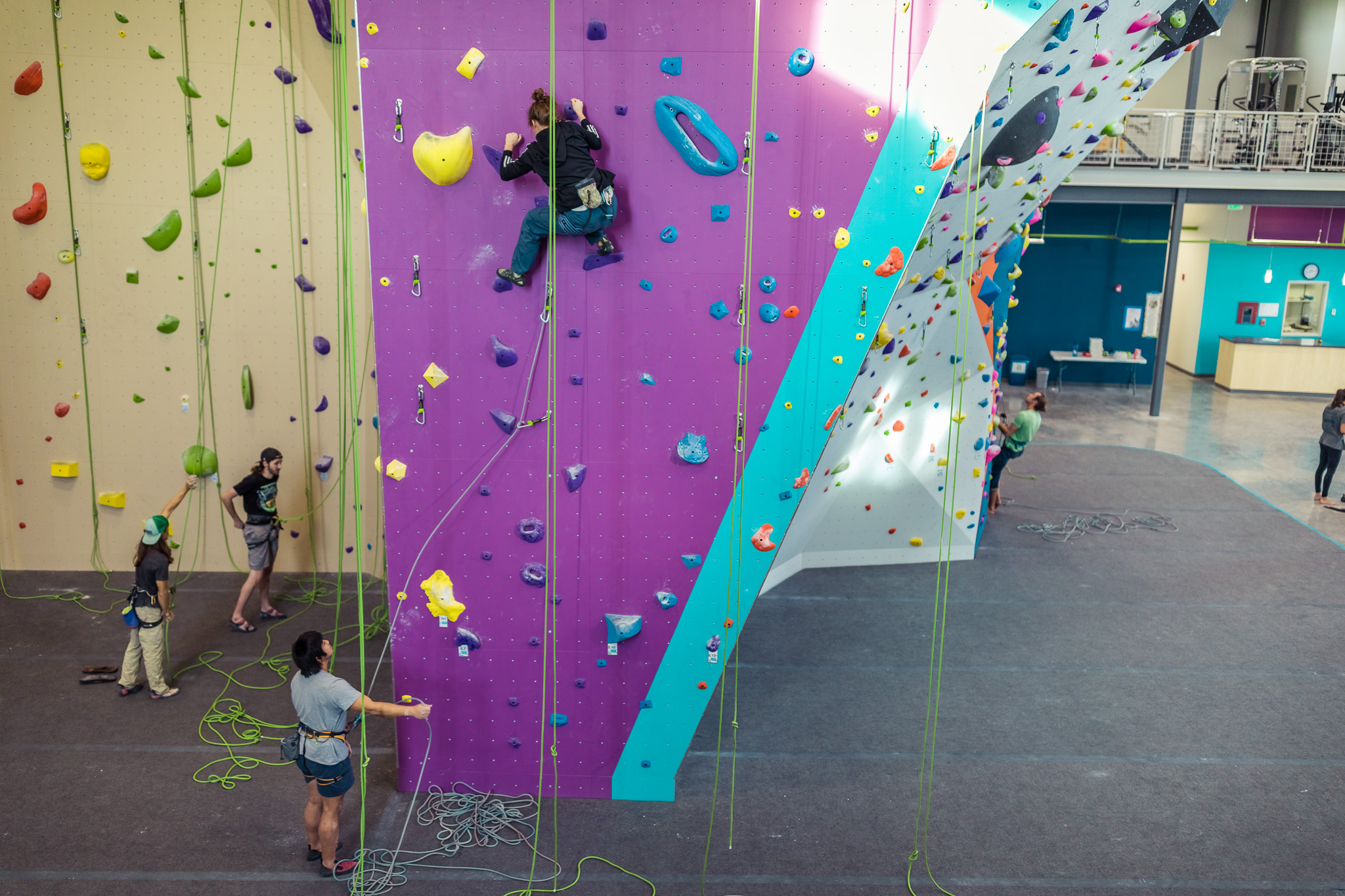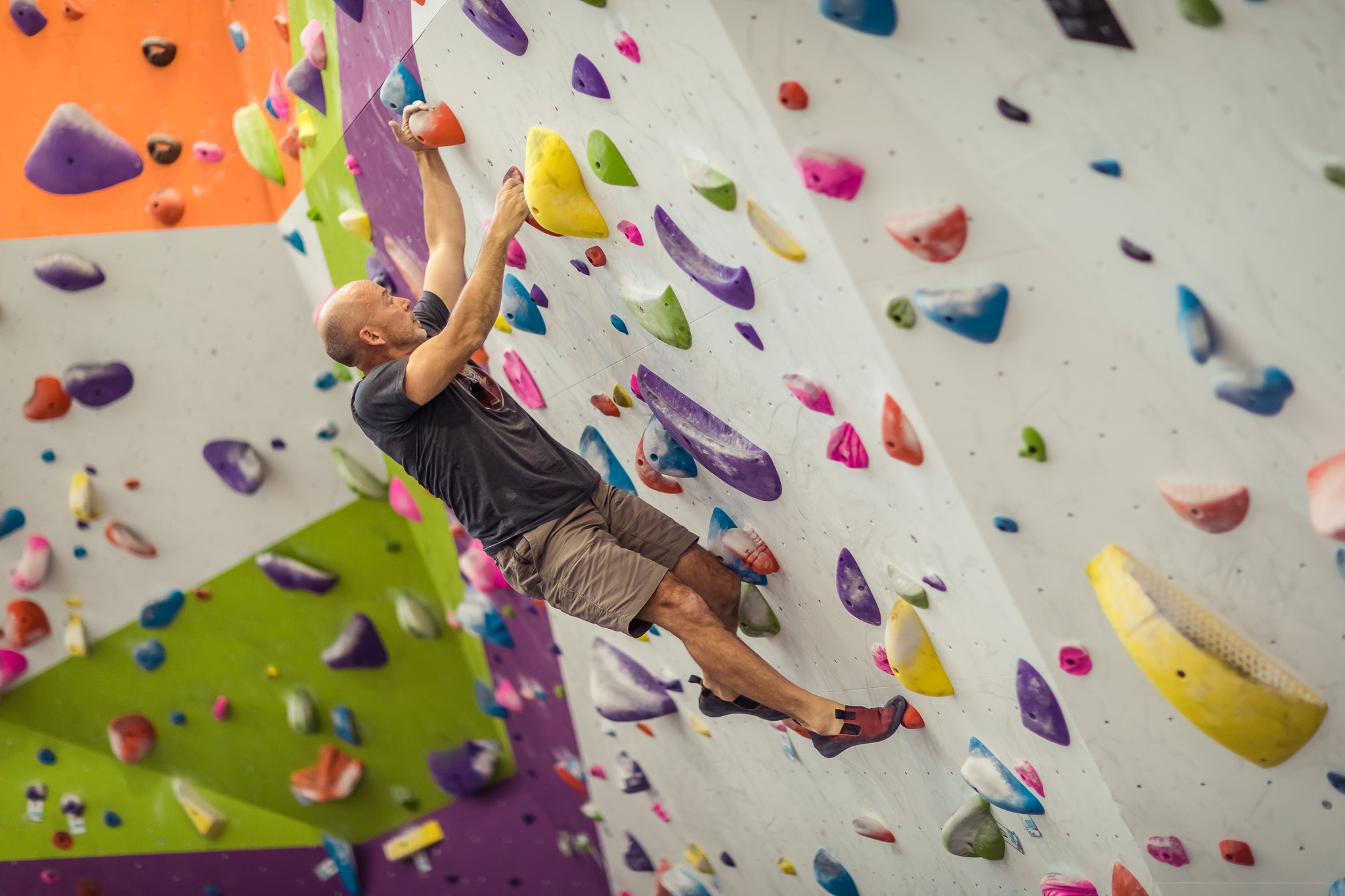Safety, Rules, and Etiquette
Our Approach
Climbing is a technical sport that requires training, knowledge and discipline. The climber must understand and acknowledge the risks involved, take personal responsibility for his/her own safety and make a personal commitment to safe climbing practices.
When climbing indoors we believe it is best is to follow the same safety principles used outdoors:
- Understand that climbing can never be made perfectly “safe.” Like any other sport, there is always the possibility of accident or injury.
- Risk tolerance is always a personal decision.
- Through training and personal discipline, risk levels can be made acceptably low for most people.
- Making the effort and taking the time to learn proper climbing and belaying techniques reduces risk for the participant and other climbers.
- Discipline is required to avoid complacency.
- Consistently perform double-checks on equipment, tie-in and communications.
- Climbers must actively assume personal responsibility for their own actions.
- Always check your equipment and that of your climbing partner.
- Experienced climbers are encouraged to assist others to follow protocol while climbing and belaying.
Use of Personal Protection Equipment
Ascent Staff may disallow the use of climber supplied PPE under the following circumstances:
- If the staff is unfamiliar with its use and is unable to determine if it is being used in the recommended manner.
- If the equipment looks to be damaged or beyond its recommended useful life.
- If the user does not demonstrate an understanding of its proper use and the staff is unable to provide instruction.
Gym Rules
General Rules
- All visitors must register at the front desk and complete an Ascent Studio Visitor Agreement.
- Parents are responsible for their children at all times. Children under the age of 14 must be supervised at all times unless they are actively participating in an Ascent Studio program.
- No running, horseplay, or gymnastics of any kind; do not swing on the ropes.
- No yelling or profanity.
- Food and drink (other than water) is not allowed in the climbing area.
- Keep all clothes, equipment and water bottles off of the padded areas. There are ample lockers and cubbies around the gym.
- No smoking, drugs, or alcohol allowed. Anyone suspected of being under the influence may be asked to leave the premises.
- Please do not wear climbing shoes into the bathrooms.
Climbing Rules
- Climbers with hands above 12’ must be “on-belay” unless they are climbing in designated bouldering areas.
- All belayers ( top rope and lead) must pass an Ascent Studio belay qualification test. Certain restrictions apply for belayers under the age of 14. Please review our Youth Belay Policies for more info.
- Most standard belay devices are allowed for top rope belay (tube-style, ATCs, GriGris, etc.). We do NOT allow belaying with Figure 8 devices in our facility. Only Assisted Braking Devices are allow for lead belay. ABD Policy Here
- Before using any equipment (e.g. belay device, harness) that is unfamiliar to you, ask an Ascent Studio staff member for instruction.
- A climber’s voluntary participation in bouldering indicates their acknowledgement that bouldering is very dangerous. Bouldering has a higher frequency of injury than roped climbing because every fall is a ground fall. Neither a spotter nor padded flooring may prevent injuries.
- The upstairs training area is reserved for climbers age 16 and above (or have approval from an Ascent Studio climbing coach).
- Be aware of your surroundings at all times. Do not climb, stand, or sit below another climber.
- Do not climb while wearing headphones.
- Climbing on anything besides designated climbing surfaces (e.g. ladders, building structures) is prohibited.
- Only Ascent Studio staff are allowed to provide lead-climbing instruction in the studio. Ask the desk staff if you want your partner to teach you how to top-rope belay.
- Lead climbers must provide their own rope and must accept responsibility for ensuring that it is in good condition and of appropriate length to lower the climber to the ground (40M ropes are recommended).
Bouldering Recommendations
- Once you reach the top of the wall, try to climb your way back down or top-out.
- Do not try to catch yourself with your arms when falling.
- Do not try to “stick” your landing when falling. Roll with your momentum.
- Using a spotter is not recommended. Spotters understand that they may be injured by the boulderer when they fall.
Climbing Gym Etiquette
- Be aware of other climbers. Take turns when climbing in areas that are highly trafficked, on routes that cross paths, or on routes with intersecting fall zones.
- Please take turns on the auto-belays. If people are waiting, please do not continue to run laps, yield to other climbers.
- Whoever starts their climb first has the right-of-way on the climbing wall. If you become aware of a conflict, someone needs to yield.
- It’s natural to want to share ideas. You may feel a strong desire to offer beta (advice) to someone climbing. If so, consider first asking if they would like to receive it. Sometimes people enjoy the challenge of problem solving and the joy of unlocking sequences on their own, while other times they will gladly accept your offerings.
- If you are bouldering, please place your chalk bags and buckets on the ground (and out of fall zones) as opposed to tossing them. Also, try to dust your hands with chalk inside of a chalk bag or chalk pot in order to contain as much excess chalk as possible.
- If you use a brush pole, store it in a safe, landing-zone-free space without making it a trip hazard. Certainly, they should be off the pad; preferably, in the one of the holders designed for them. or tucked flush against the edge of the padding.
- Wear closed-toe shoes and keep climbing shoes off restroom floors. Other climbers don’t want to grab where your feet have been or the residue from restroom floors. Think about it.




